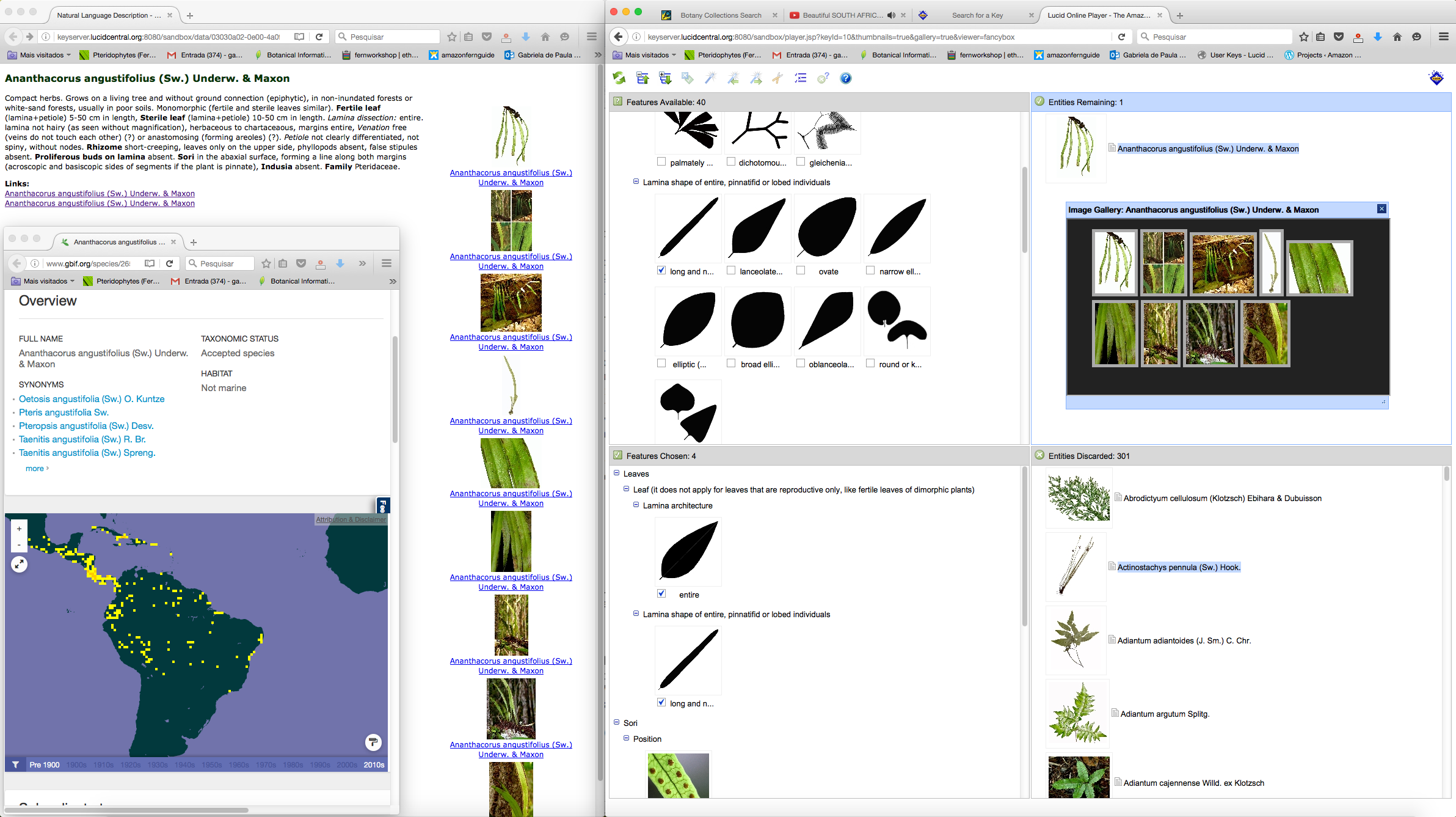Languages
Tool to identify Amazonian ferns can make it easy!
It was launched this week an online multi-entry key to identify Amazonian ferns. The key also contains descriptions and photos of over 250 Amazonian species.

The coordinator of the project, Dr. Hanna Tuomisto explains: "The motivation to do the key is that the species of ferns can be used as indicators of soil properties and floristic patterns. This information is valuable for mapping forest types and this is relevant for biodiversity conservation. But most of the people interested in using the species as indicators are not ferns experts.”
Multi-entry keys are easy to use. They can include an almost unlimited number of photos, which facilitates the identification by comparison. In addition, the identifier can choose to start from the easiest plant characteristics. "For example, if you have a sterile plant in hands, you can skip all the questions about reproductive leaves. In traditional dichotomous keys, this is not possible, if you do not know the answer for a certain step of the key, you simply cannot proceed with the identification using that key" explains the fern taxonomist Dr. Jefferson Prado. To the ecologist Dra. Gabriela Zuquim other advantage is that online key is dynamic and therefore it can be updated continuously: "This year, for example, three new species of the genus Metaxya were described (Cardenas et al. 2016) and immediately included the new species to the key".
The key was developed by researchers from the University of Turku (Finland), INPA-PPBio, Manaus and the São Paulo Institute of Botany. It is based on the Guide to the Ferns of Rebio Uatumã, released in 2008 that included cantral Amazonian species only. The key in digital version expanded the area of coverage and embraced the whole Amazon. To Dra. Gabriela Zuquim "inventories and collections in PPBio sites were important and the list of species included in the key is as complete as possible thanks to it." The project was funded by the Academy of Finland.
The key was tested in workshops in Peru, Brazil and the United States. Even without experience in identifying ferns, master's students of INPA were able to quickly identify at least 50% of ferns seen in an expedition to the Ducke reservation. The key is also available through the link http://www.utu.fi/en/sites/amazon/publications/Pages/online-tools.aspx, which also contains a glossary of the terms used.
How to cite:
Zuquim, G. Tuomisto, H. Prado, J. Cárdenas, G., Lehtonen, S. 2016. Amazonian ferns V1.1. Available at: http://keyserver.lucidcentral.org:8080/sandbox/user/keys.jsp

